Photos of the EATWOT Conference in Jo'burg, South Africa
On the first day of the EATWOT Conference, July 24, the
delegates when on a one-day exposure-immersion in
the South West Township (SOWETO) near Jo'burg.
Soweto is, of course, known as the township where the
students' uprising took place in 1976, which was a water-
shed event in terms of the anti-apartheid struggle in
this country. From the conference center near the
airport, we took the bus to Soweto, passing by some
parts of Jo'burg.
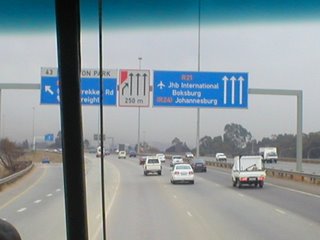
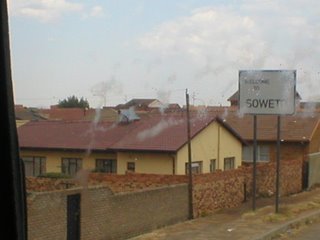
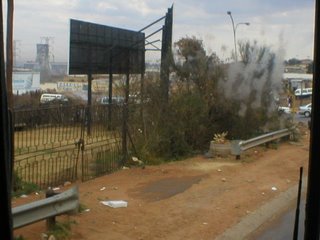
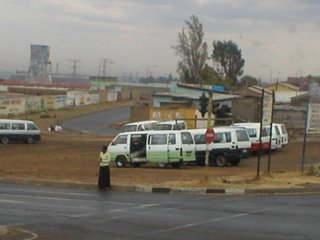
As we arrive in Soweto, we immediately saw that this was
where the "taxis" have their on-site terminal, waiting for
their passengers. These taxis are the main public transport
system in So. Africa. In Soweto we had a chance to visit
the boxhouses. Even as some improvements have taken
place in terms of the housing in Soweto, a lot of people
continue to live in one-room boxhouses.
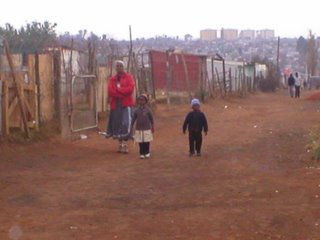
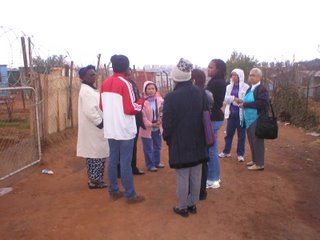
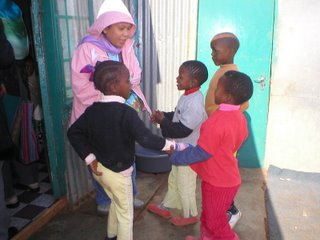
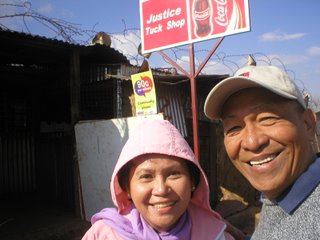
Note the sign board in one of the "sari-sari" stores in Soweto:
Justice Tuck Shop. Archie and I thought this was a good
spot for a photo-op in Soweto.
Since there are a lot of visitors who go to Soweto, there
are also some vendors selling tourist souvenirs.
In Soweto, there are also middle class houses now.
One of these is the residence of Winnie Mandela, Nelson's ex.
Bishop Tutu's residence is near her house.
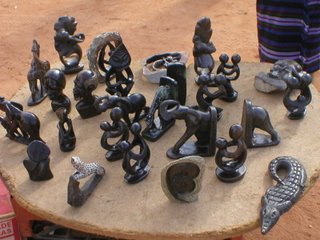
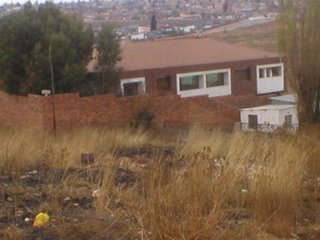
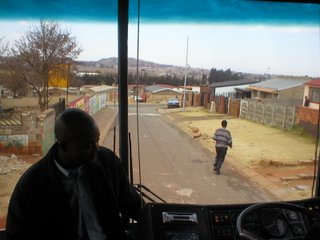
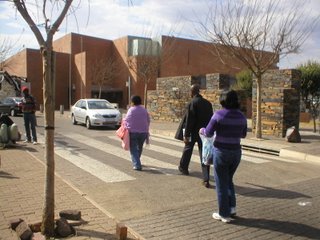
We visited two museums in Soweto: first, the Hector Pieterson
museum that celebrates the uprising of the young people in
Soweto in l976 and the museum of Nelson Mandela's family.

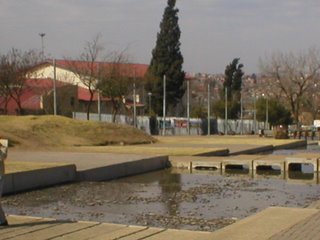
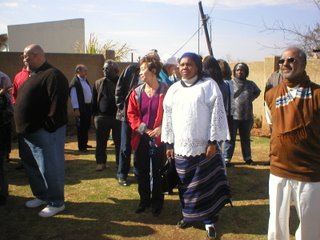

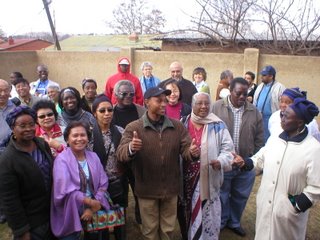

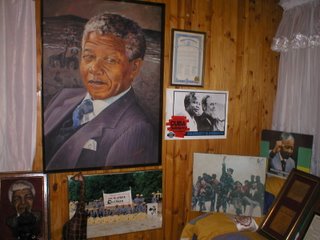
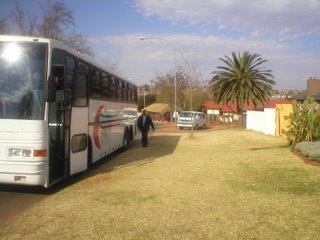
A
After Soweto, we went to the Origin's Center in Jo'burg. This
museum has exhibits of the archaeological fossils unearth in
Maropeng, as well as exhibits of the San Tribe, one of the
most fascinating indigenous peoples of So. Africa whose
culture involved cave drawings, rituals with out-of-body
transcendal travels and the like.

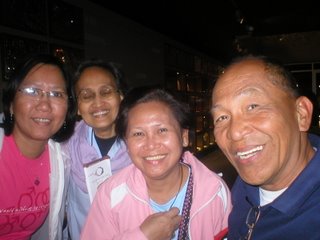
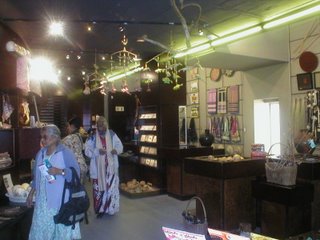
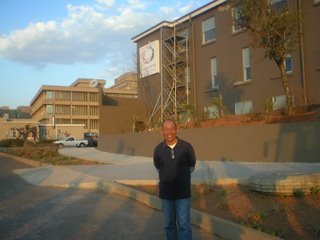
The EATWOT Conference was held from July 26 to 27 at
the Lutheran Center at Kempton Park. There is a man-made
lake in front of the Center. There were 42 delegates from
Asia, Latin America, US Peoples and Africa.
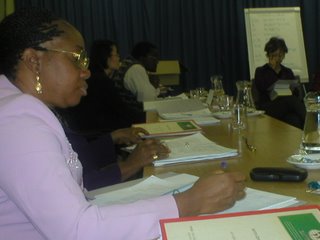
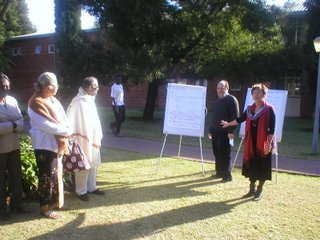
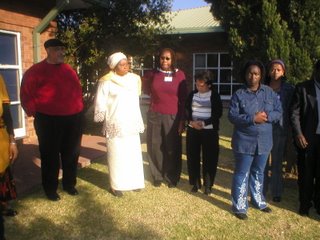 One of the liturgical celebrations was the one organized by the Latin American delegation which involved remembering the ancestors while the delegates gathered around a tree.
One of the liturgical celebrations was the one organized by the Latin American delegation which involved remembering the ancestors while the delegates gathered around a tree.
]
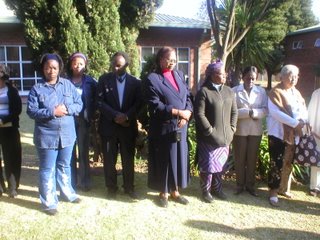
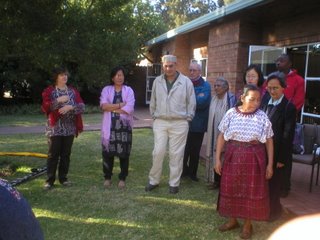
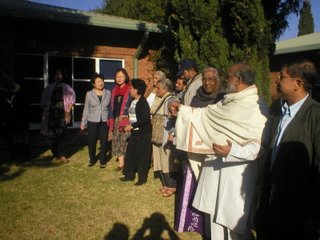
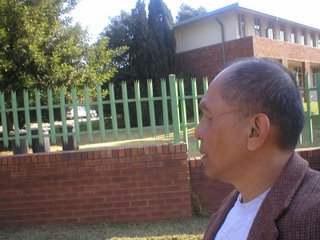
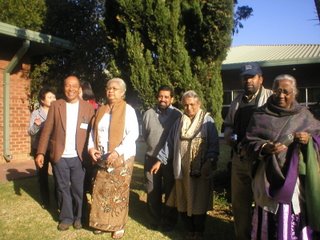
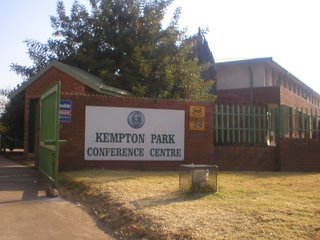
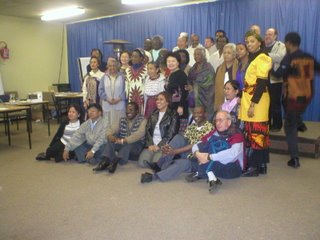
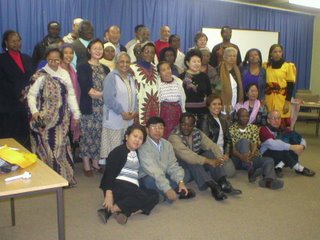

delegates when on a one-day exposure-immersion in
the South West Township (SOWETO) near Jo'burg.
Soweto is, of course, known as the township where the
students' uprising took place in 1976, which was a water-
shed event in terms of the anti-apartheid struggle in
this country. From the conference center near the
airport, we took the bus to Soweto, passing by some
parts of Jo'burg.




As we arrive in Soweto, we immediately saw that this was
where the "taxis" have their on-site terminal, waiting for
their passengers. These taxis are the main public transport
system in So. Africa. In Soweto we had a chance to visit
the boxhouses. Even as some improvements have taken
place in terms of the housing in Soweto, a lot of people
continue to live in one-room boxhouses.




Note the sign board in one of the "sari-sari" stores in Soweto:
Justice Tuck Shop. Archie and I thought this was a good
spot for a photo-op in Soweto.
Since there are a lot of visitors who go to Soweto, there
are also some vendors selling tourist souvenirs.
In Soweto, there are also middle class houses now.
One of these is the residence of Winnie Mandela, Nelson's ex.
Bishop Tutu's residence is near her house.




We visited two museums in Soweto: first, the Hector Pieterson
museum that celebrates the uprising of the young people in
Soweto in l976 and the museum of Nelson Mandela's family.








A
After Soweto, we went to the Origin's Center in Jo'burg. This
museum has exhibits of the archaeological fossils unearth in
Maropeng, as well as exhibits of the San Tribe, one of the
most fascinating indigenous peoples of So. Africa whose
culture involved cave drawings, rituals with out-of-body
transcendal travels and the like.




The EATWOT Conference was held from July 26 to 27 at
the Lutheran Center at Kempton Park. There is a man-made
lake in front of the Center. There were 42 delegates from
Asia, Latin America, US Peoples and Africa.


 One of the liturgical celebrations was the one organized by the Latin American delegation which involved remembering the ancestors while the delegates gathered around a tree.
One of the liturgical celebrations was the one organized by the Latin American delegation which involved remembering the ancestors while the delegates gathered around a tree.]










0 Comments:
Post a Comment
<< Home